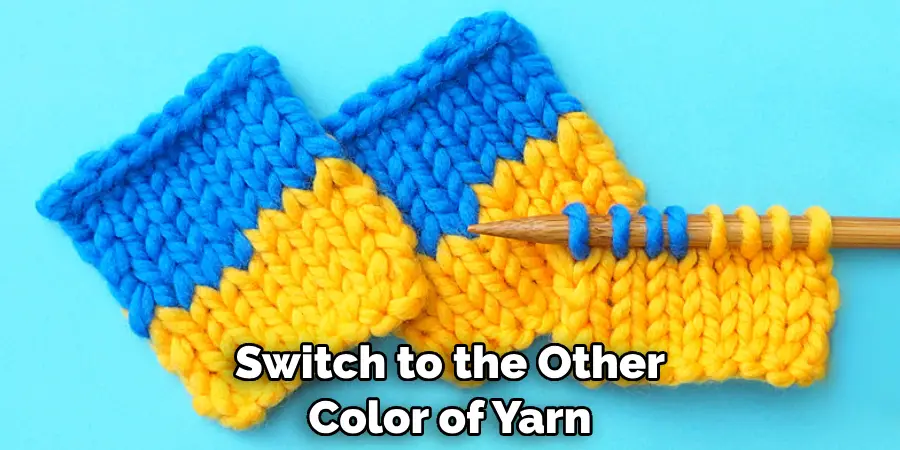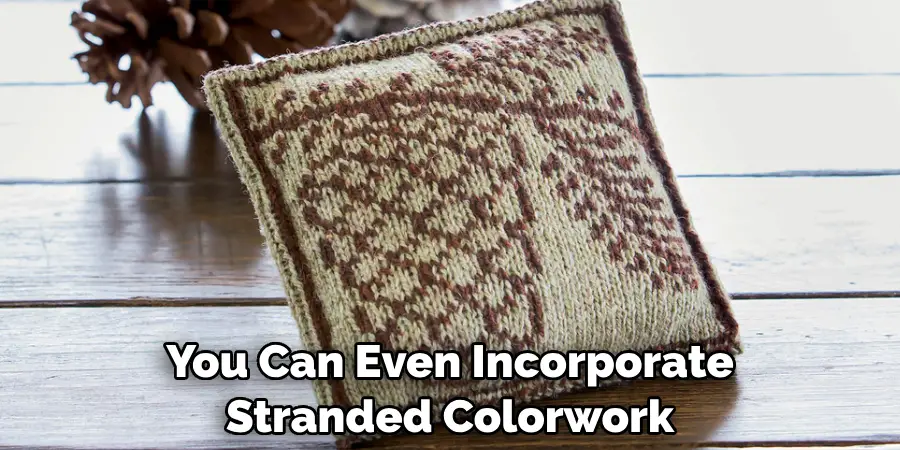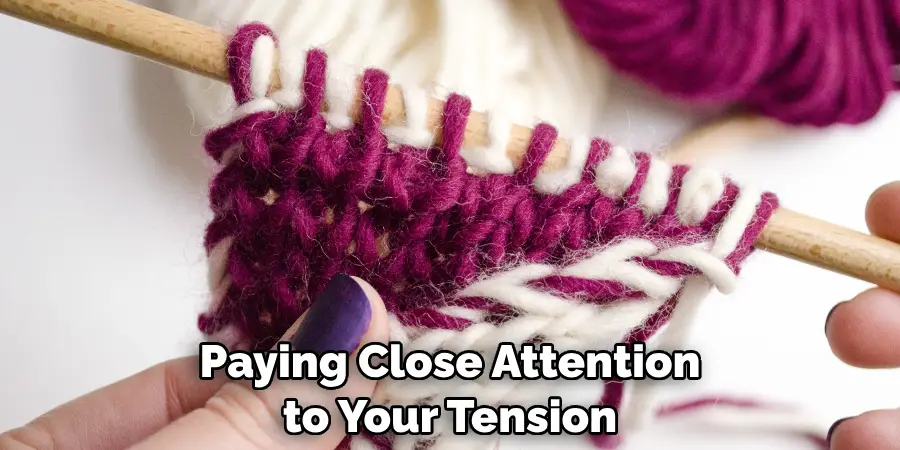Are you a knitting enthusiast looking to level up your skills? Then double knitting—the art of creating a double-sided, reversible fabric using two sets of needles—is just the challenge for you! This impressive method has been used for centuries all over the world, and mastering it will leave those around you in awe.
Learn how to create intricate patterns, different color combinations, and stunning shapes simply by combining two strands into one project. Join us as we unravel this fascinating skill through careful instruction: get ready to Double Knit!

Double knitting is an incredibly versatile method of creating warm, double-layered fabric that can be used for all types of garments and accessories. Not only will this technique help you create cozy sweaters and beautiful scarves, but it’ll also give you the confidence to make intricate patterns with unique textures.
In this blog post, we’ll go over exactly how to double knit so that even beginner knitters can get in on the action!
Why May You Want to Double Knit?
1 . To Create Reversible Fabric
Double knitting is a great technique for creating reversible fabric. When you double knit, each side of the fabric looks identical to one another, making it perfect for anything that needs to have two sides looking the same such as scarves, hats, and mittens.
The process of double knitting involves weaving two pieces of yarn together in opposite directions so that each side looks like a mirror image of the other. This creates a thick, warm fabric that is often used for winter garments.
2 . To Create Complex Patterns
Double knitting can also be used to create intricate patterns. The two layers of intertwined yarn allow for more complex stitch patterns than what is possible with single-layer knitting. With double knitting, you can create intricate designs and color blocks that would be impossible with single-layer knitting.
3 . To Create Thick, Warm Fabric
Double knitting is also great for creating thick, warm fabric. The two layers of intertwined yarn act as insulation against the cold, helping keep your projects warm and cozy all winter long. Double knitting also creates a sturdier fabric, making it perfect for durable items such as mittens and socks.

4 . To Make Interchangeable Pieces
Double knitting is an easy way to make pieces that are interchangeable with one another. For example, if you’re creating a scarf or hat using double knitting techniques, you can easily make the same item in different sizes or colors without having to start all over again. This makes double knitting a great option for creating matching sets of clothing.
5 . To Create Long-Lasting Pieces
Double knitting is known for producing fabrics that are long-lasting and durable. The two layers of intertwined yarn help create a fabric that will hold up well against wear and tear over time. This makes double knitting a great option for creating items that will be used for many years to come.
How to Double Knit in 6 Easy Steps
Step 1: Gather All The Tools
The very first step is to gather all the necessary materials to begin a double knitting project. This includes two circular needles of the same size, a set of at least four stitch markers, and two skeins of yarn in colors that coordinate.
Step 2: Cast On & Make A Slide Marker (SM)
Now that you have all the materials ready, it’s time to start your project. Begin by casting on however many stitches you need for your project, making sure that the number of total stitches is divisible by four. Then, place an SM on one needle so it hangs onto both needles.
Step 3: Knit the First Round & Place Stitch Markers (SMs)
Start from the right side of the project, and use one color to begin knitting. Once you reach the SM, slip it from its current spot on the needle to the next stitch. Continue knitting until you reach the end of the round, then place two more SMs onto each needle.
Step 4: Knit The Second Round & Place Stitch Markers (SMs)
Switch to the other color of yarn, and continue knitting in the same way as the first round. As you reach each SM, slip it from its current spot on the needle to the next stitch. When you finish a full round, place two more SMs onto each needle.

Step 5: Repeat Steps 3 & 4
Continue to repeat steps three and four, alternating colors each round until you reach the desired length of your project. Remember to move the SMs every two rounds, and knit each round in a different color.
Step 6: Bind Off & Block Your Project
Once you’ve reached the desired length of your project, it’s time to bind off. Start by using one color to knit the first three stitches, then lift the first stitch over the other two and off the needle. Knit the next two stitches together in a similar fashion. Continue this pattern until all of the stitches have been bound off, cut your yarn, and weave in any remaining ends with a tapestry needle.
Once your final bind-off stitch is in place, block your project to help it lay flat and keep its shape. This will also enhance the colorwork of the double knitting, bringing out all the intricate details of your work!
Some Extra Tips to Double Knit
1 . Invest in Quality Yarn
When it comes to knitting, the quality of your yarn is everything. This is especially true for double knitting as you will need two balls of different colors and lots of tension control. So make sure you get the best possible yarn you can afford.
2 . Practice With a Smaller Project First
Double knitting might require more skill and focus than regular knitting. To help you get the technique down, it’s a good idea to practice with a smaller project like a scarf or hat before tackling larger items.
3 . Prepare for a Thicker Fabric
Since double knitting involves two layers of yarn being worked simultaneously, you will end up with a thicker piece of fabric compared to regular single-ply knitting. Make sure you account for this when working with designs or silhouettes that need a different type of fabric thickness.

4 . Try Out Different Patterns and Techniques
Double knitting is not just limited to basic stitch patterns – there are plenty of fun and unique techniques out there to try out, like the double spiral stitch or the double-knit brioche stitch. So don’t be afraid to experiment and find the ones that work best for you!
5 . Have Fun and Enjoy the Process
Above all, double knitting should be something you enjoy – so take your time and have fun with it! With practice, patience, and dedication, you’ll soon become an expert at double-knitting.
Frequently Asked Questions
What Precautions Should I Take When Double Knitting?
When double knitting, it is important to pay special attention to the tension of your yarn. It should be loose enough that you can easily manipulate the yarn to create the stitches, but not so loose that there are gaps in your fabric.
Additionally, you may find that it’s helpful to use a smaller needle than usual, as this can help you maintain even tension. Make sure that you keep count of your stitches to make sure they are even and consistent. Finally, be patient with yourself: double knitting can take some practice before you get the hang of it!
What Kinds of Patterns Can I Create With Double Knitting?
Double knitting is a great way to create two-color patterns, such as a checkerboard texture or stripes. You can also use the double knitting technique to make two pieces of fabric at once, which can be used for items like hats and mittens with no wrong side showing.
Additionally, if you’re feeling particularly adventurous, you can even incorporate stranded colorwork into your double knitting work!

How Do I Cast On When Double Knitting?
When double knitting, you will need to cast on twice the number of stitches that your pattern calls for. To begin, use a slip knot to make two loops around your needles. Then, knit one loop onto the other needle and purl one loop onto the other needle. Repeat this process until you have the desired number of stitches on each needle.
What Are Some Tips For Finishing Double Knitting Work?
When binding off your double-knitting work, it is important to make sure that both sets of stitches are bound off evenly. You can do this by placing the two loops together and then binding them off at the same time.
Additionally, you may find it helpful to use a larger needle than usual for binding off, as this can help ensure an even tension throughout the piece. Finally, be sure to block your finished work to make sure that the edges remain neat and even.
What Materials Do I Need To Get Started With Double Knitting?
Two balls of yarn, two circular knitting needles, and a few stitch markers are all you need to get started with double knitting. Make sure that the yarns you choose are relatively similar in weight and fiber type so that they can be knitted together cohesively. Additionally, it’s always helpful to have a copy of the pattern handy as well!
How Can I Make Sure That My Double Knitting Project Is Even and Consistent?
The key to even, consistent double knitting is paying close attention to your tension. Make sure that the yarn remains loose enough for you to easily manipulate it but not so loose that there are gaps in your fabric.

Additionally, keep count of your stitches to make sure they remain the same throughout the project. If needed, use stitch markers to help you keep track of your pattern. Finally, be patient with yourself: double knitting can take some practice before you get the hang of it!
What if I Make a Mistake While Double Knitting?
It is inevitable that mistakes will occur when double-knitting, but luckily most of them can be fixed or hidden. If you accidentally drop a stitch, you can use a crochet hook to pick up the dropped loop and put it back onto the needle.
Additionally, if you notice that your fabric is uneven or has holes in it, you may want to consider adding duplicate stitch embroidery over top of any mistakes. This way, they will be covered and not noticeable.
What Advice Do You Have For New Double Knitters?
The best advice for a new double knitter is to take your time and practice patience! Double knitting can take some getting used to, and it may feel a little overwhelming at first. Make sure that you read through the pattern beforehand so you are familiar with the instructions.
Additionally, practice tension control and use stitch markers to help you keep track of the pattern. Finally, don’t be afraid to ask questions: double knitting can be an enjoyable process, and there is no such thing as a silly question!

Conclusion
With the knowledge of how to double knit, you now have a creative and unique way to make beautiful garments. From blankets to scarves and sweaters, there are endless possibilities with this type of knitting. But perhaps the best part about double knitting is that it truly comes full circle –not only will you gain a fantastic finished product, but you will also learn a new skill while accomplishing your goal.
Out of all the different types of knit stitches out there, double knitting has its own special feel and appeal. It only requires two needles and some imagination! So why not take on the challenge? There’s nothing quite like creating something tangible from an idea formed in your mind!

